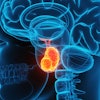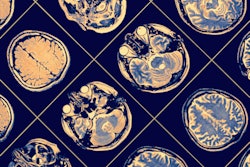
MRI shows that the sex of a concussed child has bearing on how their symptoms manifest -- findings that could help clinicians better tailor treatment, according to research presented at the recent International Society for Magnetic Resonance in Medicine (ISMRM) meeting.
Concussion incidence in children exceeds more than 50,000 per year in Canada, and 30% experience persistent symptoms, presenter Dr. Bhanu Sharma of McMaster University in Hamilton, Ontario, Canada told session attendees. But treatment remains limited and challenging, and girls are understudied in pediatric concussion, he said.
"Concussion causes alterations in region-to-region brain connectivity, and there are differences in connectivity between boys and girls -- particularly greater functional disturbance following concussion in girls compared to boys," he noted.
Cases of concussion in children have increased over the past few decades, and in response more research has been conducted to assess how best to treat the condition, Sharma and colleagues wrote in their study abstract. Some evidence suggests that there are differences between girls and boys with concussion, with girls reporting more and more severe symptoms than boys, and that girls experience longer-term effects of concussion than their male counterparts.
But there is paltry evidence as to whether there are sex differences in the neuropathy of concussion in children -- that is, disturbances in resting-state functional brain activity, the investigators wrote.
"Data on adults with concussion suggests that there may be sex-specific variability with respect to resting state brain activity," they wrote. "This led us to explore ... whether there are also sex-differences with respect to resting state functional brain activity in children with concussion."
The study included 30 children (mean age, 11, and 55.6% female) who presented in the emergency department of a large urban hospital. An emergency department physician diagnosed concussion based on neurological, vestibular, and physical exams, and all the children underwent a resting-state MRI exam within the first month of the injury. Study participants were matched to 30 healthy controls by age and sex.
The researchers found that, compared with healthy controls, girls with concussion had hypoconnectivity between the anterior cingulate cortex of the salience network and the precuneus, cingulate gyrus, and the posterior cingulate cortex of the default mode network, the paracingulate gyrus (PCC), and the subcallosal cortex. There was also hyperconnectivity between the lateral prefrontal cortex and inferior frontal gyrus and lateral occipital cortex and between the PCC and cerebellum. These differences were not observed between concussed boys and their healthy counterparts.
The data may help clinicians better tailor concussion treatment, according to Sharma's team.
"This is the first study to show that there are sex differences with respect to resting state functional brain activity in pediatric concussion," the group concluded. "[It] has implications for sex-specific management of pediatric concussion."
Early window
In another poster presented at the conference that explored children's brain health, researchers from the University of Pittsburgh in Pennsylvania found that diffusion-weighted MRI (DWI) tractography images of 3-month-old infants show how white-matter volume influences connections between particular parts of the brain.
A group led by Layla Banihashemi, PhD, discovered that bundle volumes of the uncinate fasciculus, forceps minor, and cingulum predicted infant emotionality at 3 and 9 months of age -- which the team hypothesized could give an indication of future brain health.
"Lower infant positive emotionality and greater negative emotionality predispose to future mental health problems later in childhood and adolescence," the team noted.
For their research, Banihashemi and colleagues included 52 infants who underwent functional connectivity MRI and DWI scans during natural sleep; all were full-term and physiologically and neurologically healthy. The investigators assessed the children's temperament and emotionality using a tool called the Infant Behavior Questionnaire Revised.
The group found the following:
- Greater cingulum bundle volume at three months was associated with less positive emotionality at 3 and 9 months of age.
- Greater uncinate fasciculus volume at three months was associated with less negative emotionality at 3 months of age.
- Greater forceps minor volume at 3 months of age predicted less positive emotionality at 9 months.
The results raise the question as to whether there may be ways to support the development of children's long-term mental health from a very young age, according to the researchers.
"Modulating connectivity among regions in the default mode, central executive, and salience networks might be promising future approaches for interventions to maintain infant emotionality and reduce risk of future psychopathology later in childhood and adolescence," they concluded.



.fFmgij6Hin.png?auto=compress%2Cformat&fit=crop&h=100&q=70&w=100)





.fFmgij6Hin.png?auto=compress%2Cformat&fit=crop&h=167&q=70&w=250)











